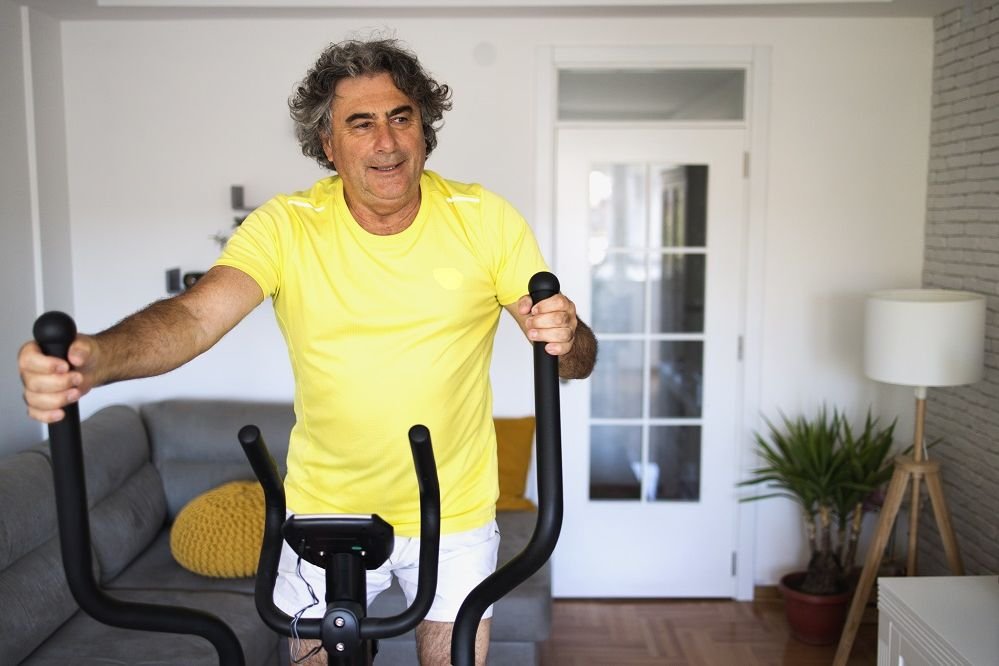The heart wants what the heart wants: intensity
A new study shows the cardiovascular benefits of more intense activity

Key points
- Research finds moderate to intense exercise is better than time spent exercising at lower intensity.
- Heart disease rates were reduced by 14 per cent.
- Walking briskly at a pace of at least 100 steps per minute for seven minutes is better than slow walking for 15 minutes.
New research has found moderate to intense physical activity has a bigger impact on reducing cardiovascular disease risk.
The study, led by researchers from University of Leicester and University of Cambridge, analysed wrist-worn accelerometer-measured physical activity data from more than 88,000 UK participants.
Vigorous activity, such as running and strenuous cycling, was measured and compared with the minutes of moderate exercise completed, such as walking. This data was tallied with the number of heart attacks, strokes and cases of heart disease experienced by the participants over the next seven years.
They found heart disease rates were 14 per cent lower among people who did one-fifth of their total activity at a moderate to vigorous intensity compared with people who managed half that amount of intense physical effort each week. This is equivalent to converting a daily 14-min stroll into a brisk 7-min walk.
Most physical activity guidelines recommend adults should be active every day and undertake 150 minutes of moderate-intensity activity (such as a brisk walk) or 75 minutes of vigorous-intensity activity (such as running) every week.
Physical activity is defined as the intensity of the activity multiplied by time. Until recently, it has not been clear if overall physical activity volume is most important for health or if more vigorous activity confers additional benefits.
Researchers said their findings confirmed that increasing the total amount of physical activity lowers the risk of heart attack or stroke but achieving the same overall amount of exercise through higher-intensity activities had a substantial additional benefit.
Lead researcher Tom Yates said that for those who hardly broke a sweat when they exercised, there was a slight improvement in rates of heart disease, but for those who increased their time spent doing vigorous exercise by 20 per cent, disease risk fell by 23 per cent.
“Our message is that you are much better off walking briskly at a pace of at least 100 steps per minute for seven minutes than slow walking for 15 minutes,” Yates says. “If you are time-strapped, then make sure the activity entails physical effort, and you can cut the duration.
“We use the example of walking because people can easily fit into their lifestyle. But whether you are running, cycling, or doing other forms of exercise, the harder you work, the greater the return.”
Key facts for seniors
- Keeping active helps you stay physically and mentally strong.
- Aim for about 30 minutes of moderate-intensity physical activity on most days, but any amount of exercise is beneficial — even just a few minutes.
- Strength and weight-bearing activities can increase bone density, helping to prevent osteoporosis.
- Consider exercising with a friend, and choose activities you enjoy, to help you stay motivated.
If you have a medical condition or have been mostly inactive, see your doctor before starting any vigorous exercise program.
- Biceps curl, Gains: Improved arm muscle strength
- Stair climbing, Gains: Cardio fitness and leg power
- Exercise bike, Gains: Blood sugar control and general fitness
- Walking after a meal, Gains: Reduced blood sugar
- Moderate walking, Gains: Mood boost and reduced hunger pangs
- Running, Gains: Brain function and mood
- Bodyweight circuit, Gains: Fitness gains and leg power
Cardiovascular (cardio) fitness activities help keep your heart and lungs healthy, including:
- Brisk walking
- Cycling
- Swimming
- Golf
- Tennis
- Aerobics classes
- Dancing
For further reading: Health Direct, LE and The Australian








